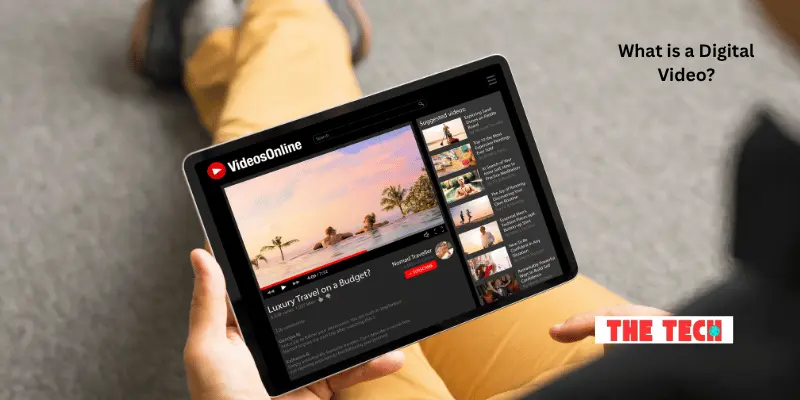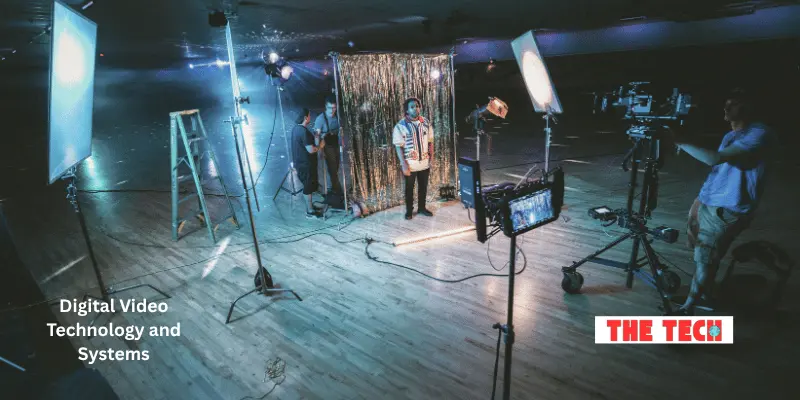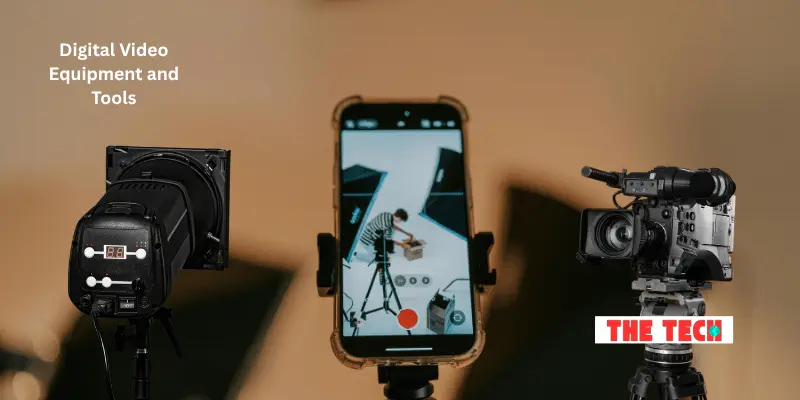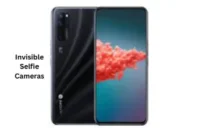What is a Digital Video? Easy Explanation for Students and Creators
Published: July 2, 2025
What do YouTube, Netflix, and your video calls have in common? Yes, digital video. What is a Digital Video?
They all rely on digital video to bring sound and moving pictures right to your screen, whether it’s for entertainment, learning, or staying in touch with loved ones.
Not too long ago, videos were stored and shared using bulky tapes or DVDs. But in today’s digital world, everything is faster, more precise, and easier to access.
From social media clips to 4K movies, video content is everywhere, thanks to digital technology.
So, what is digital video, and why does it matter today?
In this guide, we’ll explain in simple terms what digital video really means, how it works, and why it has become such a significant part of our daily lives.
What is a Digital Video?

Let’s keep it simple, digital video is a type of video that is stored, shared, and played using computers, smartphones, and digital devices.
Instead of using tapes or film, digital video uses computer data (0s and 1s) to show moving pictures and sound.
In other words, what is a digital video? It’s a video composed of many tiny pictures (called frames), shown at a very high rate, usually 24 to 60 frames per second, to create the illusion of motion.
These frames are saved as digital files, just like your photos or documents.
If we talk about how it’s different from old-style analog video:
- Analog video is recorded using physical signals (like VHS tapes).
- Digital video is saved as a file on your phone, laptop, or camera card.
- In simple terms, if you’re watching a video on YouTube, Facebook, or Netflix, you’re watching a digital video.
So, when we define video in computer language, we’re talking about a file made of visual and sound data that a computer can read and play. That’s the basic definition of video in the digital world!
Analog Video vs Digital Video
Many people still wonder: What is analogue video, and how is it different from digital video? Let’s break it down.
Key Differences – Analog Video vs Digital Video
| Feature | Analog Video | Digital Video |
| Format | Physical signal (waves) | Binary data (0s and 1s) |
| Storage | VHS Tapes, Camcorders | Digital files (MP4, AVI, MOV, etc.) |
| Quality | Can degrade over time. | Consistent quality, no loss |
| Editing | Difficult and time-consuming | Easy and fast with software |
| Sharing | Needs special equipment | Easy sharing via the internet, cloud, USB |
| Examples | Old TV broadcasts, VHS movies | YouTube videos, Zoom calls, Netflix |
Benefits of Digital Video Over Analog
Better quality: Digital video remains sharp and clear, even after being copied or transferred multiple times.
Easy to edit: You can cut, join, or add effects using video editing software.
Quick to share: Send a digital video in seconds via email, social media, or cloud storage.
Takes up less space: Compressed digital files are smaller yet still retain high quality.
So, when we talk about analog video vs digital video, the difference is clear. Digital video is a modern, reliable, and ideal choice for today’s fast-paced digital world.
How Does Digital Video Work?
Have you ever flipped through a picture book quickly to make the images appear to be moving? That’s a flipbook—and that’s how digital video works too, just with technology!
Frames, Pixels, Resolution & Frame Rate
A digital video is composed of frames—these are still pictures shown one after the other at a very high rate. Your eyes see them so quickly (approximately 30 frames per second) that it appears to be real motion. This speed is referred to as the frame rate.
Each frame is made up of tiny dots called pixels. The number of pixels in each frame is referred to as the resolution. Higher resolution = more pixels = more transparent video.
So, when people ask, “How do videos work?” — the answer is:
- Videos are made of many images (frames),
- Shown quickly with pixels and resolution,
- To create the effect of movement.
Compression: Codecs and Formats
Raw digital video files are large and can occupy a significant amount of space. That’s where compression comes in—like zipping a big file into a smaller one.
This is accomplished using a codec (short for “coder-decoder”).
Popular codecs include:
- H.264
- HEVC (H.265)
- VP9
- AV1
Once compressed, the video is saved in a digital video format like MP4, AVI, or MOV.
Compression helps reduce file size without significantly compromising quality.
You might hear terms like digital video compression center or software—these are tools or systems that help manage and compress video files for easier use.
Digital Video Technology and Systems

Behind every video you watch—whether it’s a movie, vlog, or video call—there’s innovative digital video technology making it all happen smoothly.
The Tech Behind Digital Video
To create digital videos, we use:
- Cameras with special sensors (like CMOS or CCD) that capture light and turn it into data.
- These sensors help record the scene frame by frame and convert it into a digital video system that your device can store or display.
- This process happens in phones, webcams, DSLRs, and even security cameras. It’s fast, automatic, and very accurate.
Hardware and Software
Creating or watching digital video also involves:
Hardware: cameras, microphones, memory cards, video cables, screens, and processors.
Software: editing apps like Adobe Premiere Pro, Final Cut Pro, or even basic apps like iMovie.
These tools allow you to:
- Record
- Edit
- Add sound and effects
- Export in different formats
That’s where the video software definition comes in—it refers to any app or program used to work with video files.
Video Definition Standards
To keep things consistent worldwide, there are video definition standards that decide:
- The size of the video (like HD, Full HD, 4K)
- Frame rates (like 30 fps, 60 fps)
- Audio quality
- File format and codec used
These standards ensure that videos play correctly on various devices and platforms without any issues.
In short, digital video technology combines intelligent hardware and sophisticated software to capture, process, and deliver the videos we watch every day.
It’s the system behind the screen that makes everything look smooth and professional!
Types and Formats of Digital Video
There are many different types of digital video, and they come in various formats depending on how and where they are used.
Common Digital Video Formats
A digital video file can be saved in different formats. These formats decide how the video is stored and played. Some of the most common digital format video types include:
- MP4 – Very popular, works on almost all devices
- MOV – Mostly used on Apple devices
- AVI – One of the oldest formats, still used today
- MKV – Supports high-quality videos, often used for movies
Each format has its own advantages in terms of quality, file size, and compatibility.
Streaming vs Downloaded Videos
There are two main ways to watch digital video:
- Streaming: You watch the video online without downloading (like on YouTube, Netflix, or Instagram).
- Downloaded: You save the video file to your device, allowing you to watch it anytime, even without an internet connection.
Both are digital video types, but streaming is more common today because it’s fast and convenient.
Video Quality: HD, 4K, 8K, VR & 360°
Digital videos also come in different resolutions (quality levels):
- HD (High Definition) – 720p or 1080p
- 4K – Ultra High Definition, very clear
- 8K – Super high-quality, used in professional setups
- VR (Virtual Reality) and 360° video – Interactive videos that let you look around in all directions
These formats are ideal for immersive experiences, such as gaming, virtual tours, or advanced filmmaking.
What Are Video Clips?
When you define video clips, they are short pieces or segments of a longer video. For example, a 10-second scene from a movie or a short TikTok video is a video clip.
They’re commonly used in social media, news, and presentations.
What is S-Video?
S-Video (Separate Video) is an older connection type used to send analog video signals. It’s not very common now, but was used in older TVs and DVD players before digital connections became standard.
So if you’re looking for an S-video definition, it’s a method of transmitting standard-definition video in better quality than older composite cables.
So, whether it’s a full-length movie or a 10-second reel, every digital video file has a specific format and type, and understanding these helps you choose the right one for your needs.
Digital Video in Everyday Life
Digital video plays a significant role in our daily lives. Whether it’s for learning, working, or entertainment, it has become an essential tool in today’s digital world.
- Education: Digital videos are widely used in schools and online learning platforms for lectures, tutorials, and presentations. Teachers use them to explain complex topics, while students rely on them for better understanding and revision.
- Marketing and Business: Companies use digital video to promote their products and services. From advertisements and brand stories to customer reviews, videos help businesses connect with their audience more engagingly. When asked, digital video is used for which of the following purposes, the answer includes marketing, training, advertising, and customer engagement.
- Social Media and Entertainment: Digital video powers platforms like YouTube, Instagram, and TikTok. Users create and watch short video clips every day. These clips are both fun and informative, and they play a significant role in today’s online culture.
- Filmmaking and Digital Video Production: Today, most films and documentaries are created using digital video production methods. This enables creators to shoot, edit, and produce high-quality content more quickly and at a lower cost than traditional film.
- Screencasts, Explainers, and Tutorials: A screencast is a video recording of your computer screen, often used for demonstrations or training purposes. It is common in online courses and tech tutorials. Explainer videos help straightforwardly introduce products or ideas, while tutorials offer step-by-step guidance on how to accomplish a task.
Digital Video Equipment and Tools

Creating and watching digital video wouldn’t be possible without the right equipment and tools.
Whether you’re recording a short video clip or producing a full documentary, certain devices and software are essential for working with digital video.
Recording Equipment
To begin with, you need a camera that can capture video in digital format. Some of the most commonly used recording devices include:
- Smartphones – Most modern phones have built-in cameras that can record high-definition or even 4K video.
- Webcams – These are used for online meetings, streaming, and video calls.
- DSLR and Mirrorless Cameras – These are preferred for professional content creation because they offer high image quality and better control.
- Camcorders – Though less common today, they are still used in some professional setups.
- Action Cameras – Devices like GoPro are used to capture fast-moving scenes, sports, and adventure shots.
All these devices come equipped with digital sensors that convert light into digital data, enabling the video to be saved as a file on a memory card or other device.
Storage Devices
Once the video is captured, it needs to be stored safely. Standard storage tools include:
- Memory cards (SD cards)
- External hard drives
- Cloud storage services
- USB flash drives
These storage options allow easy access, sharing, and editing of video files.
Editing and Production Software
Once your video is recorded, you may want to edit or improve it. That’s where video software comes in.
The term video software definition refers to any program that allows users to edit, cut, add effects, or convert videos into different formats.
Popular video editing software includes:
- Adobe Premiere Pro
- Final Cut Pro
- DaVinci Resolve
- iMovie
- Filmora
These tools are used in both professional and beginner-level digital video production.
Playback and Viewing Tools
To watch digital videos, you also need the proper display and playback tools. These include:
- Monitors and screens with high resolution
- Media players (like VLC or Windows Media Player)
- Streaming platforms (such as YouTube, Netflix, or Vimeo)
These tools enable you to view videos in the highest possible quality, depending on your device and internet speed.
Video Recorder and Interfaces
A digital video recorder (DVR) is a device that records video in digital format, often used in security systems or television recording.
There’s also the digital video disk, which is a disc used to store digital video content; however, it’s less commonly used today due to the prevalence of streaming and cloud storage.
Another critical part of the system is the digital video interface, which refers to the cables or ports used to transfer video signals between devices, such as HDMI, USB, or SDI cables.
Digital video relies on a combination of recording devices, storage, software, and viewing tools.
Whether you’re just starting or working professionally, the right equipment and tools make the video creation process smoother and more effective.
Advantages of Digital Video
Digital video has changed the way we create, watch, and share content. Compared to older formats such as VHS tapes or film reels, digital video offers numerous clear advantages.
| Advantages of Digital Video |
|---|
|
In short, digital video is flexible, fast, and user-friendly. It allows creators and viewers to enjoy better quality with less effort.
That’s why it’s the preferred choice for everything from personal videos to professional filmmaking.
Challenges and Limitations of Digital Video
While digital video offers numerous benefits, it also presents a few challenges. Knowing these can help you better manage and utilise video files effectively.
- Large File Sizes: Although digital videos can be compressed, high-quality videos, such as 4K or 8K, still require a significant amount of storage space. If you’re working with longer videos or high-resolution content, you’ll need extra storage or a faster internet connection for uploading and streaming.
- Needs Good Equipment: To record or edit high-quality digital video, you need good cameras, proper lighting, and reliable software. Without the right tools, your video might not look or sound the way you want it to.
- Compatibility Issues: Not all video formats are compatible with every device or software. Sometimes, you may need to convert files before they can be opened or edited. This can be time-consuming if you’re working with different systems.
- Compression Loss: When video files are compressed to reduce size, some quality may be lost. If you compress a video too much, it may appear blurry or lose audio clarity.
- Requires Technical Knowledge: Although editing software is easier to use now, it still takes time to learn. Beginners may feel confused by the various settings, timelines, and file types.
Despite these challenges, digital video remains a powerful and popular tool. With the correct planning and tools, most of these issues can be easily managed or resolved.
Future of Digital Video Technology
Digital video technology is constantly growing and improving. In the coming years, we can expect even more exciting changes in the way we create, share, and experience video.
Higher Resolutions and Better Quality
Video quality continues to improve every year. We’ve already transitioned from HD to 4K and are now moving to 8K.
In the future, we’ll see more ultra-high-definition videos with richer colours and sharper details. This means more explicit images on larger screens, perfect for films, sports, and live events.
Virtual Reality and 360° Video
Videos won’t just be something you watch — they’ll become something you experience. With virtual reality (VR) and 360° video, viewers can look around and interact with what they see.
This will be used in gaming, education, training, and even online shopping.
Smart Compression and Streaming
As video quality increases, so does file size.
Future video technology will incorporate more innovative compression methods that preserve video quality while utilising less storage and data.
This helps make high-quality videos stream faster, even on slower internet connections.
Artificial Intelligence in Editing
AI is starting to play a significant role in video editing.
In the future, editing software will become even more intelligent, automatically adjusting lighting, removing background noise, and even assisting in creating short video clips from more extended footage.
This will save time and make editing easier for everyone.
More Personal and Interactive Content
Digital video will also become more personalised. Platforms may use AI to recommend or even create video content based on your interests.
There will also be more interactive videos where viewers can click, choose paths, or respond during playback.
In short, the future of digital video is faster, wiser, and more immersive. As technology improves, creating and watching videos will become even more fun, creative, and easy for everyone.
FAQs
Digital video is a type of video that is stored and played using digital data, like computer files. It uses 0s and 1s (binary code) to capture and display images and sound. Unlike old videotapes, digital video doesn’t lose quality over time and is easier to edit and share.
Digital video is composed of frames—still pictures displayed quickly one after another. Each frame is composed of pixels, and the more pixels there are, the more precise the video appears. The video is saved as a file and can be played on digital devices, such as phones, computers, and TVs.
Standard digital video formats include MP4, MOV, AVI, and MKV. Each format has its own strengths in terms of quality, file size, and compatibility. MP4 is the most widely used format because it is compatible with almost all devices and platforms.
Analog video records images using continuous signals, usually on tapes like VHS. Digital video, on the other hand, records using digital data and stores the content as files. Digital video offers better quality, is easier to copy and edit, and does not degrade over time.
To create digital video, you need a recording device (such as a smartphone or camera), editing software, and storage tools like memory cards or hard drives. More advanced setups may also include lights, microphones, and tripods. With the right tools, anyone can produce high-quality video content.
A DVR is a device that records video in digital format, often used in security systems or to record television shows. It saves video files on a hard drive, making it easy to rewind, pause, or fast-forward. Unlike older systems, DVRs don’t use tapes and offer much better control and quality.
Digital video compression reduces the file size of a video by removing unnecessary data. This helps make videos easier to store and stream more quickly. Good compression maintains high video quality while using less space and bandwidth.
Digital video is used for online classes, social media posts, marketing ads, video calls, and entertainment. People watch digital videos on YouTube, Netflix, and TikTok every day. It’s also used in professional fields like filmmaking, journalism, and training.
A screencast is a video recording of your computer or device’s screen, often accompanied by narration. It’s commonly used to teach software, explain steps, or provide support. Screencasts are popular in online courses, tutorials, and tech help videos.
Digital video will continue to evolve, with higher resolutions such as 8K, more interactive formats like VR and 360°, and increasingly innovative tools powered by AI. Editing will become faster and more automated, and streaming will improve even on slower connections. The future promises more engaging and personalised video experiences.
Final Thoughts
Now you know exactly what digital video is and why it plays such a significant role in our everyday lives. From social media and online classes to movies and marketing, digital video is everywhere.
It’s easy to create, share, and enjoy—thanks to innovative technology, simple formats, and user-friendly tools.
Understanding what digital video is helps you make better choices, whether you’re watching, creating, or working with video content.
As technology advances, digital video will continue to be a powerful means of learning, connecting, and communicating.
Bonus Info Points
- Bitrate and Its Importance: Bitrate refers to the amount of data used per second of video. A higher bitrate usually means better video quality, but it also increases the file size. Understanding bitrate helps when exporting or compressing videos for different platforms.
- Digital Rights Management (DRM): Many digital videos, especially on platforms like Netflix or Amazon Prime, are protected by DRM. This prevents unauthorised copying or sharing of the content. Creators and companies use DRM to secure their work and protect copyrights.
- Transcoding in Video Processing: Transcoding is the process of converting a video file from one format or resolution to another. This is useful for making videos compatible with different devices or reducing file sizes without much quality loss.
- Closed Captions and Subtitles: Digital video allows for the easy addition of closed captions and subtitles. This makes videos more accessible to people with hearing impairments and also helps viewers understand content in other languages.
- Green Screen (Chroma Key) Technology: Green screen is commonly used in digital video production to replace the background of a video with something else. It’s widely used in weather forecasts, movies, and YouTube videos to create engaging visuals.
- Multi-Camera Editing: Some digital video editors support multi-camera editing, allowing you to switch between different camera angles within the same video. This is useful for interviews, events, and professional video shoots.
- Metadata in Digital Video Files: Every digital video file contains metadata—information like video length, resolution, codec, and even location. Metadata helps in organising, searching, and understanding video content more efficiently.

- Be Respectful
- Stay Relevant
- Stay Positive
- True Feedback
- Encourage Discussion
- Avoid Spamming
- No Fake News
- Don't Copy-Paste
- No Personal Attacks



- Be Respectful
- Stay Relevant
- Stay Positive
- True Feedback
- Encourage Discussion
- Avoid Spamming
- No Fake News
- Don't Copy-Paste
- No Personal Attacks





